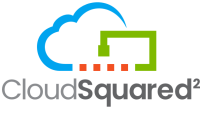
Mini golf, dinner, and death by PowerPoint: it’s no one’s favourite way to spend time with their colleagues. But team offsites can be important opportunities to step out of the daily grind with your employees and work through meaty issues you otherwise don’t have time to address. So how do you ensure that the money and preparation you invest in an offsite produces value for you, your business, and your team?
“In a world of back-to-back meetings,” says Darren Levy, senior consultant and facilitator with Human Synergistics New Zealand, “an offsite is your opportunity to reset a line or make some decisions and choices without the day-to-day pressures or distractions.”
Darren has been a facilitator with Human Synergistics, specialists in supporting development, change, and innovation across businesses and their teams, for over 12 years. While he is understandably a proponent of taking time out of the workplace with your team, he understands why some SME owners might approach the idea of an offsite with caution.
“It’s definitely an investment, and I think some people have been burned by poorly designed and executed offsites in the past,” he says. “But with good design, good facilitation, and a really clear outcome in mind, we’ve seen some considerable shifts and measurable impacts from a business perspective, and a leadership and culture perspective as well.”
So what does good offsite design look like? Darren says the first step is to clarify what you want to achieve. If you’re after some social time and an opportunity to decompress, then a group activity plus dinner ticks all the boxes. But if the goal is to create a shift in your business or to get your team’s buy-in as you navigate change, that requires a different set of elements.
“We need to design the offsite based on the objective that we have,” says Darren. “So it’s like any intervention: it shouldn’t be a content dump of slides that just put people to sleep. We don’t want to confuse too much content with impact. We want to ask: how will we help people to do things differently?”
It’s understandable to want to pack the agenda, but Darren also recommends “a blend of structure and spaciousness” that allows your team to have conversations and discuss topics they normally wouldn’t have the chance to. “Avoid a jam-packed agenda that never gives you time to breathe or to have those positive collisions with your colleagues.”
Another pitfall? Forgetting your audience. Darren warns against designing an offsite that suits management but not necessarily the rest of your workforce. “It’s a shared outcome that we want, so know your audience and also know your context. We want to have active ownership of outcomes, rather than passive nodding in the crowd.”
He adds that while there’s often an emphasis on making sure your group has fun, this shouldn’t be the ultimate goal. “It’s good to keep in mind, and we should have some fun,” says Darren. “But if you quantify the cost of having everyone out for a day or two, you want to get some return on investment. So how can we make sure people walk away with something they can use? Even if it’s one thing they’re going to do differently, that would be really useful, rather than, ‘We had a nice lunch and there was a nice view from our room.’”
Instead, Darren advises focusing on three things: “Having real conversations that matter, getting clarity around the way forward, and being really clear about expectations and next steps to bring it all back into the workplace.”
He emphasises that last point especially. “If we’re wanting to have some sort of shift, we need to be quite clear that the offsite doesn’t end in the room. We’ve wallpapered the room with flip chart paper and then we don’t do anything? That seems wasteful.”
When it comes to how much your team actually participates – or doesn’t – in the day you’ve designed, Darren says he’s seen it all. “Sometimes you have ‘hostages’ who don’t necessarily want to be there, sometimes there are disruptors, and then there’s the people who are highly engaged.”
He says that this “mix of stakeholders” can be one of the reasons an SME owner or manager brings in an external facilitator to run the day. “We know the craft of facilitation, and, being external, we have no problem calling those things out. We can ask the hard questions and challenge people’s thinking because we’re not close to the current context, and we’re not afraid to have conversations others might be avoiding.”
External facilitators are also practiced hands at keeping the energy of the day up and moving – think activities, practical applications, and generally getting people energised and moving around, rather than hours of sitting and listening. “I think that’s where people start to drift off or feel like there’s no value,” Darren says. “We want to bring people into the conversation, working in peers or teams, producing something.”
An external facilitator can also offer a level of freedom to an SME owner or manager who would otherwise have to do all the presenting themselves. “Sometimes it’s quite challenging for people who work within the business to facilitate,” says Darren. “Either they feel like they miss out or like they can’t go where they need to in terms of having conversations or pushing for outcomes. We create that freedom to explore, and we’re very clear on asking: What are your next steps? How will we commit to those? What are our timeframes?”
In terms of location and the menu on offer, Darren says these factors do matter, but not in the ways you might expect.
“As much as anything, an offsite is an emotional experience,” he explains. “We have to start with people feeling psychologically safe. Having a flash venue doesn’t do that – it’s about how you bring that safety into the space. But aspects like natural light, the ability to get fresh air, and having enough space to move around and do different activities – those things do matter.
“Of course, a bit of good kai helps, but that’s not really the make or break. Definitely don’t ask people to bring their own morning tea and lunch. It can be quite a treat to have that. People can just focus on being present and in the moment.”
Within the RBA, there are several member businesses that offer venue hire and/or a catering menu to support your next offsite. Browne Street offers room hire for corporate functions, and Bounce Avondale is a fun choice for groups looking for a social activity. For corporate catering, Rosebank Kitchen, Patiki Cafe and Bar, and Columbus Coffee all have menus designed with local businesses in mind.
Above all, Darren says, if done right, your next team offsite can provide value that’s impossible to recreate from within your daily workplace routine – and that’s worth investing in.
“Post COVID, the pace is not relenting,” he says. “We spend a lot of time on screens, and for a lot of organisations, in hybrid workplaces. So actually having that time together, even if you’re already in the office together five days a week – it’s really important to intentionally use that time to move the dial, wherever the dial needs to move.”
Special thanks to Darren Levy of Human Synergistics New Zealand.






